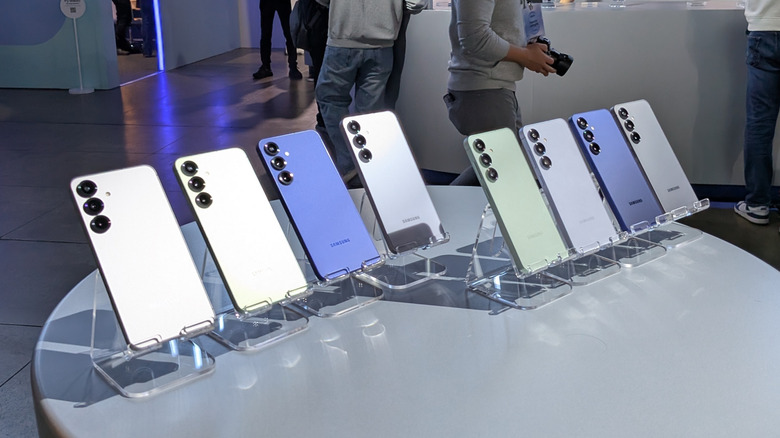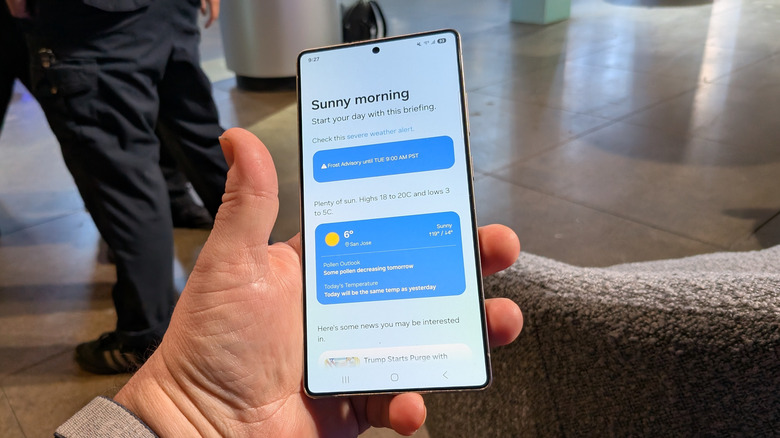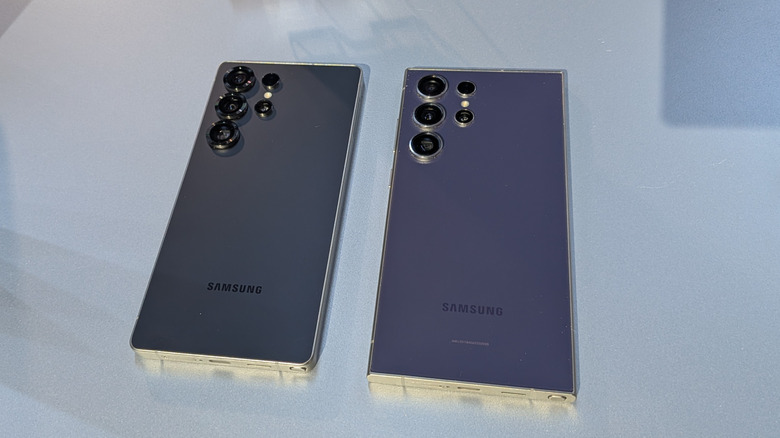Samsung Galaxy S25, S25+ And S25 Ultra Specs: What You Get For The Price
Rumors for the Samsung Galaxy S25 can finally stop. At Samsung's Galaxy Unpacked event today, the company unveiled the new Galaxy S25 lineup that consists of the Galaxy S25, Galaxy S25+, and Galaxy S25 Ultra. Samsung claims it's setting a new standard for AI integration on mobile devices here. The company's One UI 7, which will roll out first with this new lineup and then gradually to other Galaxy devices, is the realization of a vision that sees AI at the core of Android.
Each of these phones are powered by the Qualcomm Snapdragon 8 Elite for Galaxy processor that Samsung claims outperforms the Galaxy S24 Ultra and its siblings by 40% for the neural processing unit (NPU), the CPU by 37%, and the GPU by 30%. The S25+ and S25 Ultra models truly take advantage of the new processor when the resolution is set to QHD, leveraging AI to produce efficient image processing with ProScaler. Samsung has also improved the heat dissipation structure with the S25 line, promising better thermal efficiency to handle demanding AI tasks and mobile gaming.
Galaxy S25 lineup hardware detailed: display, cameras, and battery
Each of the new Galaxy phones have a lot in common, including a display with a 120 Hz refresh rate, a 12 MP front-facing camera that shoots 4K videos at 60 fps, a main camera that shoots video in 4K at 60 fps or 8K at 30 fps, the same processor, and 12 GB of RAM. However, they have more differences than similarities. The Galaxy S25 has a 6.2-inch FHD+ dynamic AMOLED 2x display while the Galaxy S25+ and S25 Ultra are larger at 6.7 and 6.9 inches, respectively, with a QHD+ resolution. Where the S25 only offers 128 GB and 256 GB of storage, you get the choice of 256 GB or 512 GB with the S25+ or 1 TB for the top tier model.
In this social media age with users scrambling to find the best TikTok alternative, you might base your choice on the type of camera a phone has. The S25 and S25+ both have a 50 MP wide lens with a 12 MP ultrawide lens — there's also a 10 MP telephoto lens with 3x zoom. The Galaxy S25 Ultra will give you the best pictures this lineup can offer with its 200 MP wide lens and 50 MP ultrawide. Even its telephoto lens is a step-up, with its 3x zoom producing 10 MP photos while its 5x zoom produces 50 MP images.
As far as battery and charging goes, the base S25 has a 4,000 mAh capacity, while the S25+ clocks in at 4,900 mAh, and the Ultra model at 5,000 mAh. The S25+ and Ultra both sport Super Fast Charging 2.0, while the base S25 only has Super Fast Charging. All three models bring the same wireless charging features to the table, however, with wireless PowerShare and Fast Wireless Charging 2.0.
Colors, price, and availability
Samsung has several color options across the Galaxy S25 line. The base tier Galaxy S25 and S25+ are available with the same four colors: "Icyblue," Mint, Navy, and Silver Shadow. If you go with the Galaxy S25 Ultra, however, you'll be able to choose from Titan Black, Titan Grey, Titan Whitesilver, and Titan Silverblue. Samsung also has additional color options for those who order the Ultra directly from its website: Titanium Pinkgold, Titanium Jadegreen, and Titanium Jetblack. Meanwhile, getting the S25 or S25+ directly from Samsung gives you Blueblack, Coralred, and Pinkgold color options.
The frame for both the S25 and S25+ are made from Armor Aluminum while the glass is Corning Gorilla Glass Victus 2. The S25 Ultra's frame is made from titanium — something Apple uses for its high-end iPhone 15 handset — and uses the same Corning Gorilla Glass Victus 2 on the rear, while the front features Enhanced Corning Gorilla Glass Armor. All three models have an IP 68 rating.
The base Galaxy S25 model starts at $799. Going a tier up to the Galaxy S25+ will cost $999. The Galaxy S25 Ultra sits with the highest price point, starting at $1,299. The Galaxy S25 phones are available for pre-order from several retailers now, including at Best Buy, Amazon, and on Samsung's website, as well as through carriers across the U.S. General availability will start on February 7, 2025.


